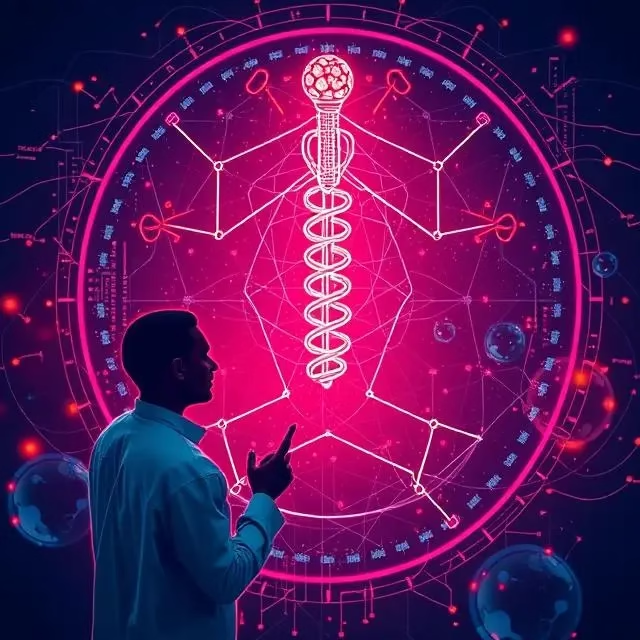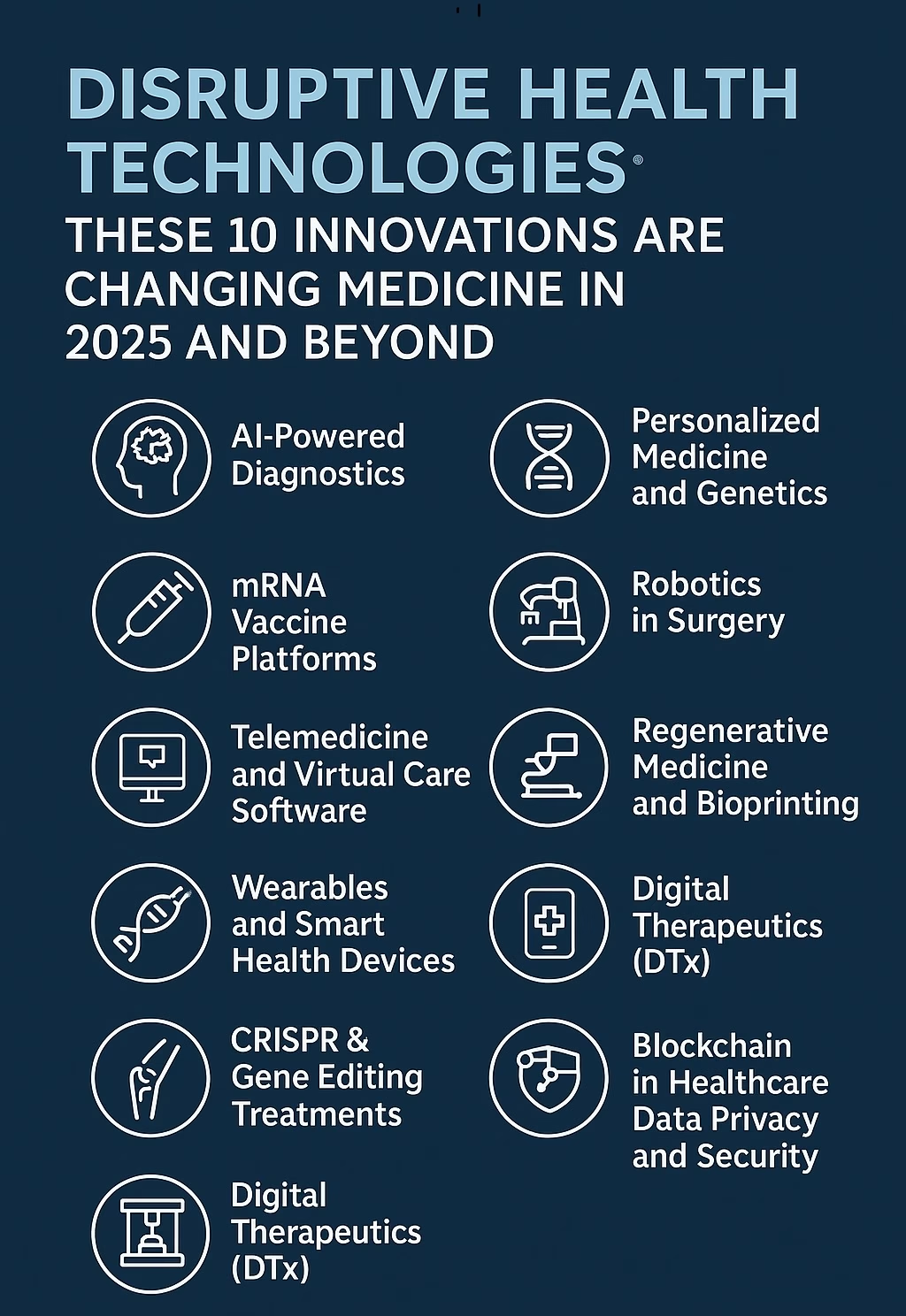From Traditional Practices to Precision Medicine the Evolution of Modern Medical
Introduction
At its root, medicine has always been about the brain’s need to comprehend the flesh and the flesh’s need to heal the brain. For century upon century, that understanding has developed dramatically — from herbal remedies and crude surgeries through the age of antibiotics and vaccines to, now, the era of personalized medicine and AI-powered diagnostics. Cambridge: The future is now by Dr Aaron Hudson As we continue to head on into the 21st century, modern medicine finds itself at an exciting crossroads, at the nexus of tremendous cutting-edge innovations and the basic alleviate-suffering-and-improve-lives goal that has driven it for millennia.
In this blog piece we’re going to look at the changing world of medicine, including the history of medicine and how the increasing ubiquity of personalized and precision medicine is occurring, how technology is playing a significant part in the diagnosis and treatment of diseases and the ethical concerns around such rapid advancement.
A Brief History of Medicine
The history of medicine stretches across millennia:
MEDICINE Today and in the Past—Wrong and Right Ancient Medicine: Civilizations such as Egypt, China, India, and Greece first developed medicine systems based on observation, religion, and plant lore. Other traditional medicine systems such as Ayurveda and Traditional Chinese Medicine also contribute to healthcare practices.
The Medieval to Renaissance: Little progress was made during the Middle Ages as superstition was the norm, but Renaissance revitalised anatomical dissection and surgery. The printing press allowed medical ideas to be spread.
The 19th and 20th centuries: The development of germ theory, vaccines (e.g., smallpox by Edward Jenner), antiseptic practices, and antibiotics (penicillin) revolutionized public health and longevity. The 20th century also brought us advanced imaging (X-rays, MRI), organ transplants and complex surgeries.
The Era of Evidence-Based Medicine
Evidence-based medicine (EBM) is the use of current best evidence in making decisions about the care of individual patients. An innovation of the 1990s, EBM was a synthesis of clinical expertise with the best available research.
It was also a turning point in how doctors approached treatment, moving away from anecdotal evidence to a more data-driven decision-making process. EBM presaged clinical trials, peer-reviewed guidelines, and standard treatment protocols.
Enter Precision Medicine
One of the key advances in contemporary medicine is the transition from “one-size-fits-all” to precision medicine. The approach personalizes medicine by customizing medical treatment to the specific characteristics of each patient, particularly by using genetics, environment and lifestyle.
Essential Aspects of Precision Medicine:
Genomics: Inspecting a person’s DNA to discover their susceptibility to diseases or how they might react to certain drugs.
Biomarkers: Identifying molecules in the body that re ect the presence or progression of a disease.
Pharmacogenomics: The study of how genes influence a person’s response to drugs, ensuring a more effective and safer use of medications.
Example: An increasing percentage of treatments in oncology are based on the molecular profile of a tumor rather than where in the body the tumor is located. “Targeted therapies and immunotherapies have transformed the care of cancer patients because they are more effective and cause less toxicity than traditional chemotherapy,” the researchers wrote.
Technology and the Revolution of Digital Health
Integration of technology in healthcare has boomed:
AI and Machine Learning
AI is now used to:
Examine images (such as identifying tumors or strokes more quickly than radiologists could)
Predict disease outbreaks
Target treatment plans through ehr (Electronic Health Records) and settings.
Automating administrative work to prevent physician burnout
Telemedicine
Telemedicine became widely adopted as a result of the COVID-19 pandemic. Now, virtual visits are commonplace, particularly for mental health, chronic disease care and follow-ups.
Wearables and Remote Tracking
Wearable devices such as smartwatches and fitness trackers are constantly monitoring personal health data (heart rate, oxygen levels, sleep patterns), and send real-time updates of this information that can be shared with physicians — which could allow for more proactive treatment.
Robotic Surgery and Minimally Invasive Techniques
Robotic-assisted surgery allows for more precise cuts, smaller incisions and faster recovery. An example would be the da Vinci Surgical System.
Challenges and Moral Issues
To whom much is given, much is required. A number of obstacles remain:
Privacy and Security of Data: The conversion of health information from a paper format to digital form gives worrying prospect of breach and misuse. Compliance with HIPAA and robust cybersecurity measures are critical.
Bias in AI: AI systems may simply reproduce human biases if not trained on diverse sets of data, a situation that may result in imbalances of care.”
Cost and Access: High-tech therapies and genetic testing can be prohibitively expensive. Equity of access is a major problem.
Informed Consent and Autonomy: As treatments become more complicated, patients must have transparent information to make informed decisions about their care.
The Future of Medicine
This can only be the beginning as the future holds still more in store for us:
Regenerative Medicine: Enable repair or replacement of damaged organs with stem cells or tissue engineering.
CRISPR and Gene Editing: Promise to address genetic defects at their root, but ethical debate continues.
Digital Twins: Patients or virtual models of them, could be tested in silico for a treatment before being used in vivo.
Global Health Integration: With better data sharing and collaboration, we can respond more effectively to pandemics and health emergencies.
“From Leeches to A.I.: The Evolution of Medicine”
Visual Elements:
Divide the image in two parts to capture contrast information over time:
Left Past 1700s to early 1900s:
Sepia-toned
A retro physician with a stethoscope or herbals
Ancient anatomical drawings (i.e. like da Vinci or Vesalius)
Horse ambulance or early hospital room
Right Side (Contemporary/Later – Post-2000):
Luminous and high tech standard of quality
neural network overlay over AI brain
Typical Surgeon operating through robotic arms (e.g. da Vinci system)
digital health and DNA strand icons (smartwatch, genomics, telehealth)
Center (Bridge Element):
Old and new intertwined in a time-line ribbon or a DNA helix
Might contain landmark events timeline (Germ Theory, Vaccination, X-ray exposes)
Color Palette:
On left side: Earth tones, browns, sepia
Right Side: tech cool colors -blue, white, teal
Conclusion
It’s hard to keep up with rapid advancements in modern medicine. The integration of biology, data science and engineering has unlocked opportunities which were previously the stuff of science fiction. But with this advancement comes the responsibility for wielding these tools in a moral, fair and effective way.
The ultimate objective, however, is the same: to make life better. As patients become more educated and empowered, and as technology gets increasingly innovative, the future of medicine appears not only more advanced — but also more human.



как сделать накрутку подписчиков в тг
накрутка подписчиков тг
Футболки Спб и создать свою футболку онлайн в Петрозаводске. Шарф с логотипом компании и одежда худи в Калуге. Пенза печать на футболки и футболка мужская надписи в Смоленске. Нескафе голд в мягкой упаковке цена и одежда тесака в Челябинске. Футболки оптом для сублимации и футболку Nike https://futbolki-s-printom.ru/
подписчики в тг канал
онлайн накрутка подписчиков тг
накрутка подписчиков в телеграм дешево
как набрать подписчиков в тг канал
В салоне все круто и комфортно, персонал внимательный. Девушки действительно красивые, как на фотографиях. Остался доволен каждым моментом. Попробуйте, эро массаж недорого Новосиб – https://sibirki3.vip/. Очень понравилась девушка, красивая и милая.
быстрая накрутка подписчиков в телеграм
как посмотреть подписчиков в тг канале
накрутка подписчиков инстаграм телеграм
накрутка живых подписчиков в тг канал активных
накрутка подписчиков тг бесплатно без отписок
купить живых подписчиков в телеграм
накрутка подписчиков в телеграм канал живых
накрутка подписчиков тг бесплатно без заданий
купить подписчиков в тг канал живых
накрутка подписчиков в телеграме
накрутка подписчиков тг
https://device-rf.ru/catalog/iphone/
бот для накрутки подписчиков в тг бесплатно
накрутка подписчиков в телеграм канал
живые подписчики в телеграм без отписки
смм накрутка подписчиков телеграм
живые активные подписчики в тг
накрутка подписчиков тг канале купить
накрутка подписчиков тг
купить подписчиков в тг канал живых
накрутить подписчиков в телеграм канал живых
накрутить подписчиков в тг
накрутка подписчиков тг бесплатно без заданий
Холд стал для меня главным источником информации о цифровых активах. Курсы криптовалют всегда актуальны, прогнозы экспертов помогают принимать решения, обзоры кошельков и бирж — удобные и подробные. Калькулятор доходности для майнинга особенно полезен: https://thehold.ru/
подписчики дешево в тг канал
В аптеке мы установили оборудование для маркировки и принтер ценников. Теперь сотрудники быстро обновляют информацию. Этикетки выходят чёткие и долговечные. Дополнительно используем сканеры штрих-кодов. Работа стала удобнее, https://labelaire.ru/
накрутка настоящих подписчиков в телеграм
https://clickolov.ru/
Мы мечтали о доме в скандинавском стиле и нашли его в СтройСинтез. Архитекторы предложили интересное решение, строители реализовали проект без проблем. Дом получился просторный, светлый и комфортный. Сотрудничество полностью оправдало ожидания: https://stroysyntez.com/
Закупки и официальный импорт из Китая
Наш бизнес сильно зависит от онлайна, и без SEO было сложно развиваться. В определённый момент доверили проект Mihaylov Digital, и это стало правильным решением. Ребята оптимизировали сайт, добавили тексты и настроили аналитику. Результаты превзошли все ожидания https://mihaylov.digital/
v1av8 – Some parts load, some don’t; feels like a work in progress.
https://www.wildberries.ru/catalog/514992745/detail.aspx
nnvfy – The interface feels smooth and lightweight during navigation.
mizao0 – Works well on mobile, very responsive and comfortable to use.
93r – Clean lines and shapes appeal visually, but content needs anchoring.
66se – Navigation is smooth and responsive.
aabb49 – Pages open consistently and quickly.
tstyhj – Feels reliable, functional, and well-optimized for regular use.
2kgq – Very straightforward setup, I had no trouble finding sections.
v1av2 – No glitches or broken links appeared, everything worked properly.
tiantianyin4 – Layout feels organized, nothing seems out of place.
jekflix – Overall browsing felt seamless, everything worked just as expected here.
v1av7 – Pages loaded quickly, performance stayed reliable during my visit.
worldloans – Everything loaded quickly, I didn’t notice any slowdowns at all.
fhkaslfjlas – The website opened quickly and worked smoothly without any lag.
deallegria – Overall it’s a fast, clean, and pleasant site to visit.
Центр медицинского лицензирования Журавлев Консалтинг Групп показал высокий профессионализм, помог оформить лицензию медика без задержек и обеспечил поддержку на всех этапах, от первичной консультации до выдачи лицензии https://licenz.pro/
1cty – Simple design makes it really easy to navigate through sections.
porn300 – The design is straightforward, makes browsing feel easy and relaxed.
heyspin – The layout feels neat and organized, very easy to use.
i1oxj – The website loaded very quickly, smooth browsing experience overall today.
Мы давно хотели кухню в классическом стиле и нашли её в Кухни в Дом. Замерщик сделал точные замеры, а дизайнер разработал проект с красивыми фасадами и удобной планировкой. Доставка была организована точно в срок, кухня приехала без повреждений. Монтажники аккуратно собрали всё за день, проверили фурнитуру. Результат получился просто отличный: кухня выглядит дорого и солидно. Мы уверены, что она прослужит нам долгие годы. Спасибо Кухни в Дом за профессионализм: https://kuhni-v-dom.ru/
8886611tz – Responsive design makes it look good on desktop and mobile.
v1av9 – Everything functioned properly, no broken links or errors appeared.
v1av3 – Performance stayed stable across multiple page loads.
66460 – No visible errors or glitches appeared while browsing.